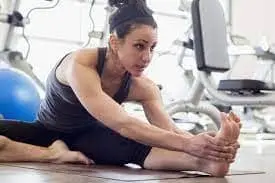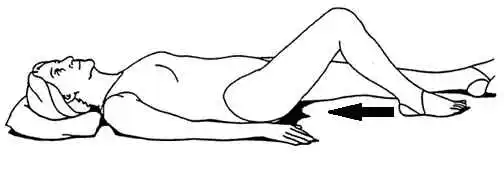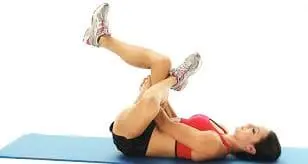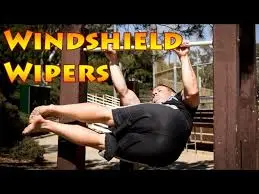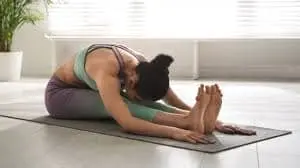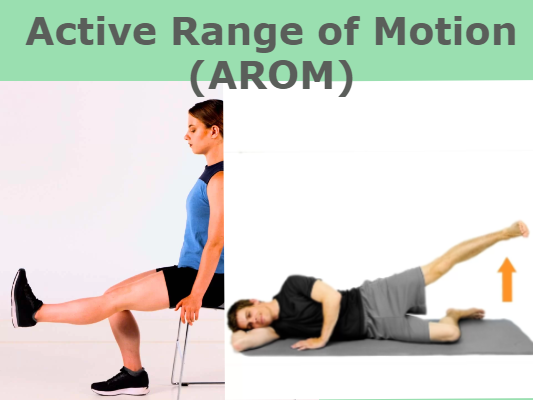13 Best Exercise For Heel Pain
Introduction:
Exercise For Heel Pain is essential for strengthening the muscles, tendons, and ligaments surrounding the heel and improving general foot function. The right exercises can reduce inflammation, increase flexibility, and stop another flare-up of heel pain.
Heel spurs, plantar fasciitis, Achilles tendonitis, stress fractures, and other conditions can all contribute to the prevalent ailment of heel pain. It can greatly impair one’s capacity for comfortable walking, exercise, and day-to-day tasks. Targeted exercise sessions may help manage heel pain and aid in the healing process; however, getting an accurate medical diagnosis and advice is important.
Over time, pain can be reduced with rest, orthotics, and exercise (such as range-of-motion exercises). If you ignore heel pain or the acute stage of the illness, you run the risk of developing chronic issues that will take more time to heal. There are factors other than underlying medical conditions that might cause heel pain. Shoes that don’t fit right, shoes with too much heel, standing for extended periods, excessive walking or running, sprains, traces, or trauma are a few examples.
Stretching activities (particularly those involving the gastrocnemius and soleus muscles), supported exercises, ankle joint movement, and end-strengthening exercises that increase muscle strength are all utilized in physical therapy.
Causes:
Oftentimes, foot and ankle conditions appear as heel pain. A pain behind the heel or on its side is possible. Several conditions can cause heel pain, and these include the following symptoms;
- Bone spurs
- Plantar fasciitis
- Stress fractures.
- Sever’s disease
- Calcaneal stress fractures
- Tarsal tunnel syndrome
- Inflamed tendons
- Achilles or flexor tendonitis
Signs and symptoms:
- Stiffness
- Swelling
- Pain
- Tenderness
- Difficulty after standing up after sitting or resting.
- The heel’s excessive bone development.
Benefits of exercise:
- Improve your posture and balance.
- Helping muscles to loosen up.
- As much as possible, try to lessen your level of pain.
- Be more flexible as a result.
- This strengthens the weaker muscles.
- You can increase your range of motion by exercising.
Risk factor:
Heel pain can result from anything, or from any specific activity, that places a lot of pressure and strain on your feet.
Increase the possibility that this illness will cause you to have heel pain;
- Overweight
- Intense physical activity, such as running or jumping for fitness or sports.
- Put on a pair of stylish high heels or tight shoes that lack a cushion or arch support.
- Have high arches in the feet, flat feet, or arthritis in the feet and ankles.
Examine the following safety precautions before starting an exercise program:
Before you start any exercise program, think about a few safety measures and optimize the benefits. Talk to your doctor or physical therapist about which exercises are most effective for your particular issue. Recognizing your body’s needs and not pushing yourself when it hurts are essential. While soreness is a typical after-effect of exercise, persistent or severe soreness may indicate exhaustion. Start with low-impact exercise sessions until you can tolerate an additional level of pain before progressing to more intense ones.
Maintaining proper form and posture is essential to avoiding repeated injuries. If you’re not sure how to start exercising correctly, speak with a doctor. Warm up before starting any workout to get your joints and muscles ready for the current task.
Exercise For Heel Pain:
Golf ball roll
- Seated upright, choose a chair with your feet flat on the floor.
- A golf ball should be placed on the ground close to your feet.
- Apply as much pressure as comfortable with one foot to the ball to move it in different directions.
- It should be the ball rubbing against the foot.
- For another two to three minutes, keep moving the ball.
- Then return to your neutral position.
- Then relax.
- Repeat this exercise five to ten times.
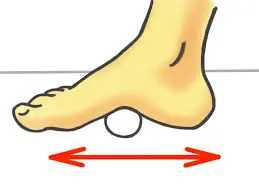
Toe raise, point, and curl
- Take a seat so that you are straight and have your feet level on the ground.
- Elevate the heels while keeping the toes planted in the ground.
- Stop when your feet are the only portions of your body that remain on the ground.
- Step down after a short while by releasing your heels.
- Just the tips of the big and second toes should touch the ground during the second stage, with heels lifted and toes pointing downward.
- After a short while, release your grip.
- In order to reach the third stage where only the tips of your toes touch the floor, lift your heels and curl them in.
- Maintain your position for a short while.
- Then return to your neutral position.
- Then relax.
- Repeat this exercise five to ten times.
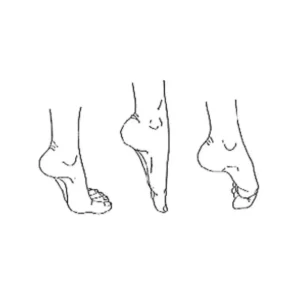
Towel curl
- Take a seat (you can alternatively stand) with your heels beneath your knees.
- Make sure the toes on both your legs and feet are parallel to each other and pointing forward.
- Spread the towel out and plant a level foot on it.
- The towel will be shifted in your direction.
- When you flex your foot back and lift your toes, maintain your heel downward.
- Keeping your heel on the towel, extend your foot evenly along both sides and the middle to bring your foot as far out on the towel as possible.
- Squeeze the towel in with your toes and arch, making sure your heel stays put.
- Bring the towel in your direction.
- Make use of all five fingertips on both sides of the foot to create a wide circle under the arch area.
- You will be able to move a limited area of the towel with each drawback and extension.
- Then return to your neutral position.
- Then relax.
- Repeat this exercise five to ten times.

Marble pickup
- Seated in an upright chair, place both feet straight on the floor.
- One empty bowl and one with at least twenty marbles in it should be placed on the ground in front of the feet.
- Using the toes of only one foot, place each marble into the empty basin.
- Then return to your neutral position.
- Then relax.
- Repeat this exercise five to ten times.
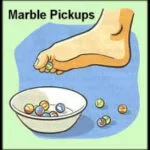
Alphabet write with the toe exercise
- Decide where to sit or stand comfortably.
- Starting with the capital letters, raise your foot a few inches and use your big toe to write the alphabet in the air.
- Use lengthy, downward motions.
- Once you’ve finished the alphabet, write lowercase letters.
- Then return to your neutral position.
- Then relax.
- Repeat this exercise five to ten times.
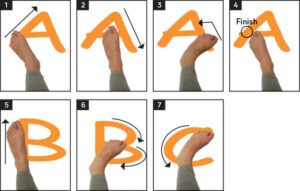
Towel Stretch
- Sitting on the floor or in bed, you can do this simple stretch.
- Legs out in front of you, take a seat on the floor or in your bed.
- Hold a towel that has been rolled up from both ends under the heels of your feet.
- Maintaining a straight knee, gradually pull the towel towards yourself.
- Hold this position for a few seconds.
- Then return to your neutral position.
- Then relax.
- Repeat this exercise five to ten times.
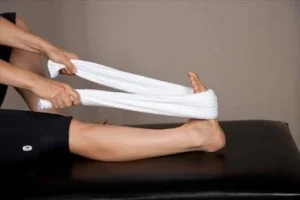
Ankle Plantarflexion
- Settle down on the floor, placing your other leg correctly and resting on your heel.
- Bend one leg at the knee.
- While the band is looped over the front of your foot, hold onto its ends with both hands.
- Point your toes forward and then back slowly to release the pressure.
- Then return to your neutral position.
- Then relax.
- Repeat this exercise five to ten times.
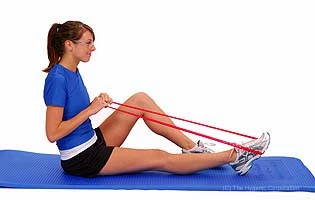
Ankle dorsiflexion
- Sit with your legs straight in front of you for an extended length of time on the mat.
- Wrap the band over one foot after securing it around the leg of a chair or table.
- After gently pointing your toes in your direction, take a step back and start over.
- Then return to your neutral position.
- Then relax.
- Repeat this exercise five to ten times.
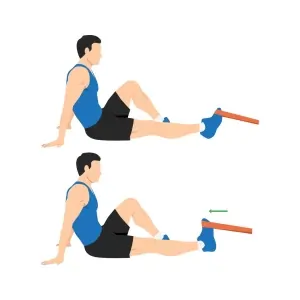
Heel Raises
- Step onto the ground and take a standing position.
- Hold this position for a few seconds.
- Let your heels come off the ground and point your toes next.
- Push through your first and second toes firmly, keeping your ankles from shifting outward during the heel lifts, to try and maintain your feet in the ideal neutral line.
- The muscles in your lower back and calves should be under use.
- Then return to your neutral position.
- Then relax.
- Repeat this exercise five to ten times.
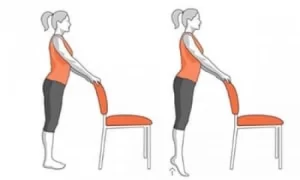
Inversion and eversion of the ankle
For eversion,
- Your affected foot should be flat on the ground to begin this active foot drop exercise.
- Next, extend the tips of your toes and the outer part of your foot, then return to your starting posture.
- Make sure your leg action is different from your foot and ankle to avoid overreacting with it.
- Then return to your neutral position.
- Then relax.
- Repeat this exercise five to ten times.
For inversion,
- To complete the ankle inversion, start with your feet in the same posture and lift the inside edge of your foot toward your body’s midline.
- Next, bring them back down.
- Then return to your neutral position.
- Then relax.
- Repeat this exercise five to ten times.
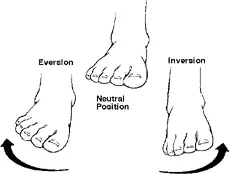
Standing calf stretch
- A wall or other sturdy object should be your face as you advance and take your place.
- Taking a single step forward, point both of your toes directly forward.
- Stretch by putting your leg behind you while extending your knee.
- With your arms supporting your body, bend your front knee until you feel a small stretch down the back of your leg as you lean forward toward the wall.
- By going in or out of the wall, take steps to lengthen your rear leg.
- It’s also possible to modify the front knee’s bend to better control the stretch.
- Hold this position for a few seconds.
- Then return to your neutral position.
- Then relax.
- Repeat this exercise five to ten times.
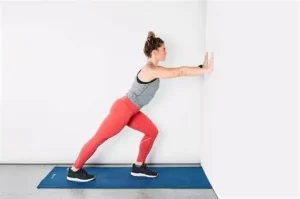
Ankle-toe movement
- First, lying down on the bed in an upright posture.
- Next, bring your toes as near to your body as possible.
- Hold this position for a few seconds.
- After that, move them off.
- Then return to your neutral position.
- Then relax.
- Repeat this exercise five to ten times.
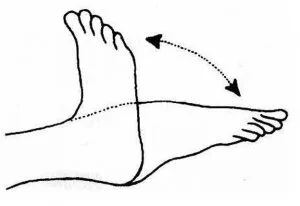
Seated foot stretch
- Place your affected heel over your other leg while you sit in a chair.
- Draw the toes in toward the shin to tighten the arch of the foot.
- Using the other hand, feel for pressure in the plantar fascia on the bottom of the foot.
- Hold this position for a few seconds.
- Then return to your neutral position.
- Then relax.
- Repeat this exercise five to ten times.
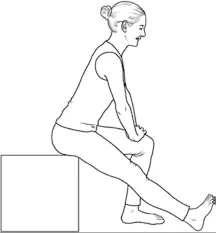
What safety measures must be taken while exercising?
- Aim to avoid using any force or fast movements when working out.
- Avoid engaging in difficult activities.
- When you exercise, take care of yourself and remain alert to prevent falling.
- To improve your range of motion and encourage relaxation throughout your workout, wear loose, comfortable clothing. Avoid wearing anything too tight or stylish.
- Stretching and bending should be done gently.
- Between your workouts, take a rest period.
- Stretching the muscles in your stiff joints is typical, however, it might be difficult at times. Exercise and stretching should not cause pain or give you the impression that someone is stabbing you since they are unhealthy and exacerbate your illness.
- Exercise should be stopped as soon as the pain gets severe.
- Maintain a straight posture when exercising.
- Before and after sets, as well as for the recommended number of repetitions for each exercise, stretches should be done in keeping with the protocol.
- Remain hydrated.
When are you going to stop working out?
- Fever
- Headache
- Exercise should be stopped if it hurts.
- Severe burning in the muscles.
- You don’t feel good.
- If numbness or pain are present.
- Blurry vision
Prevention:
- You can prevent heel pain by wearing shock-absorbing soles, strong shanks, and supportive heel counters.
- You should also warm up and stretch as soon as you get out of bed before beginning any strenuous exercise that needs muscular relaxation, wear suitable footwear for every physical activity you engage in, and always start cautiously.
- Avoid wearing shoes with very high heels or soles.
- Reducing weight can also help persons who are overweight or obese avoid heel pain.
Summary:
A sharp stabbing pain that is felt in the center of your foot is known as heel pain. Even though you might eventually require surgery to get rid of heel pain, there are some conservative options to treat it in the comfort of your own home.
Heel spurs, plantar fasciitis, Achilles tendonitis, and other underlying diseases can cause heel pain in addition to direct heel injuries. Whatever the root cause, your quality of life and your capacity to walk may be significantly impacted by heel pain.
Keeping yourself physically active and engaging in regular exercise that targets strengthening and extending the muscles and ligaments that attach to your heel is one of the best strategies to prevent pain.
FAQ:
Does exercising relieve the pain in the heel?
Sure, regular exercise may help in the healing or reduction of heel pain. Stretching helps to provide the muscles flexibility during exercise. Exercises that strengthen certain muscles do just that. Stretching and strengthening the muscles and ligaments that attach to your heel are two things that exercise takes into account. activities for pain-free range of motion should be done first, then go on to strengthening activities.
Can heel pain be relieved by walking?
Your heel condition is the determining factor. When your disease is at its acute stage, you should avoid walking and instead take it easy and relax until your pain subsides. If not, walking could exacerbate and worsen your heel pain. As little walking as possible should be done at first.
Why is there pain in the heel?
Heel pain is frequently caused by obesity, poorly fitting shoes, running and jumping on hard surfaces, unusual gait patterns, injuries, and specific illnesses.
Does heel pain respond well to hot water?
If you’re considering taking a hot bath to relieve your foot pain, remember the following: Take cold and/or hot baths in turn. For some runners, the mere presence of heat might exacerbate problems. Finish the hot baths by immersing your heels in cold water if you are performing contrasting baths.
If I have heel pain, should I continue to exercise?
Strengthening workouts, both general and specific, can increase the plantar fascia’s ability to support loads. If you are experiencing more pain when running, walking, or jumping, you may need to cut back on these activities until your tolerance to exercise has improved.
Which workout relieves heel pain the most effectively?
Ankle toe movement
Ankle dorsiflexion
Towel curl
Standing calf stretch
Standing heel raise
Does stretching make the heel pain go away?
Plantar fascia and calf muscles can be stretched to improve flexibility and lessen heel pain. Before or following an activity, people can do this exercise several times a day.
References:
- On July 14, 2023a, Prajapati, D. Physio Samarpan: The Top 15 Exercises for Treating Heel Pain. Physiotherapy Clinic in Samarpan. Here are the top 15 exercises to relieve heel pain: https://samarpanphysioclinic.com/
- June 25, 2024: Villines, Z. The ideal stretches and workouts for plantar fasciitis. The article “Medical News Today (USA): 324535,” is this one.
- Four exercises for heel pain relief are provided by Old Tampa Intervention Pain and Sports Medicine: Pain Management (n.d.). Four exercises to relieve heel pain: https://www.newtampapain.net/blog
- Bhoomika. June 15, 2024. 13 Therapeutic Physio Exercises That Are Best For Heel Pain. Physiotherapy in Therapeutics. https://therapeuticphysio.com/exercise-for-heel-pain/
- On September 5, 2024, Kapadia, S., & Kapadia, S. The Top 10 Exercises and Stretches for Healthy Feet. Medicus Sumit Kapadia. Exercises to relieve heel pain can be found at https://www.drsumitkapadia.com/blog/
- Kelly L. Geoghan, DPM, a podiatrist, provides four exercises to relieve heel pain (n.d.). Four exercises to relieve heel pain: https://www.flawlessfeet.net/blog
- Image 13, Stretches and workouts to improve the condition of your feet: The Harvard Medical School’s “Staying Healthy” webpage

